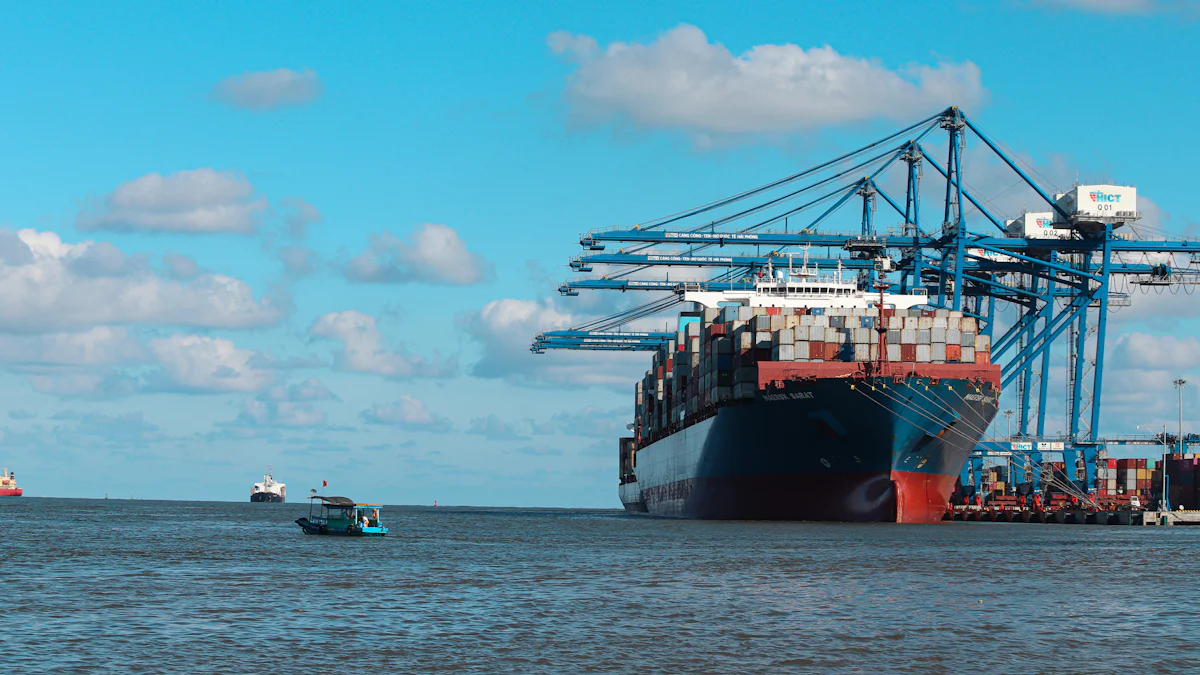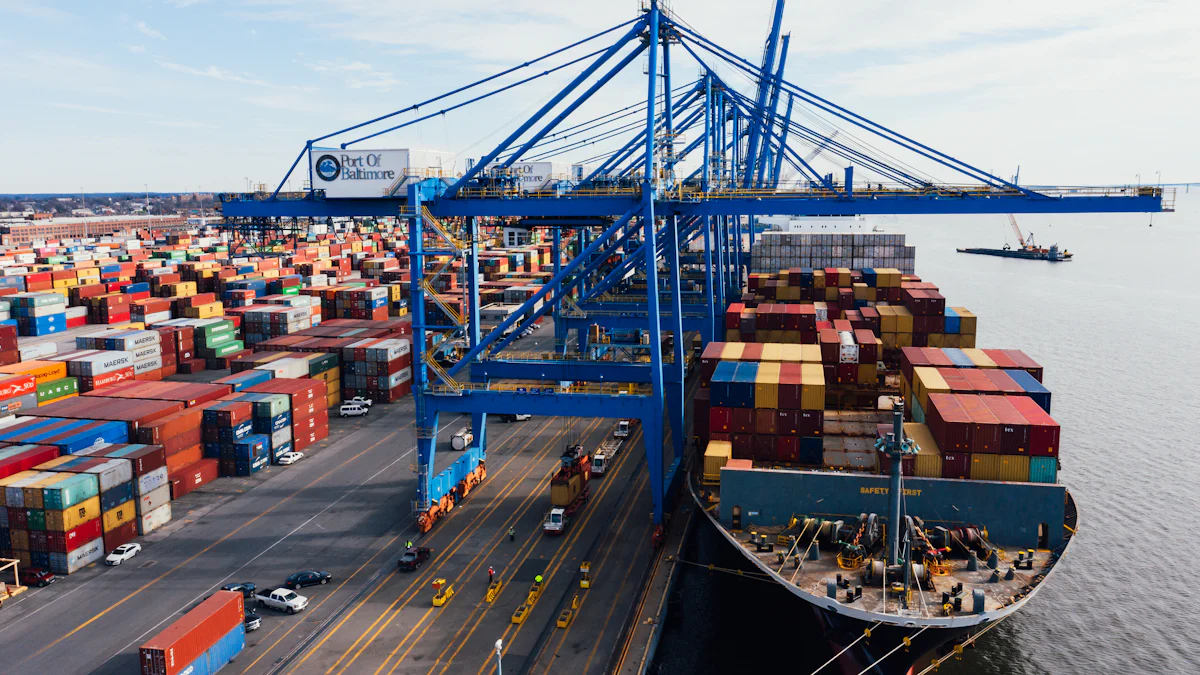U.S. Ocean Shipping: An Overview of the Present Condition

Ocean shipping plays a vital role in the U.S. economy. The marine economy contributed about $361 billion to the nation's GDP in 2020. Recent trends have highlighted the importance of this sector. Rising ocean freight rates and port congestion have created significant challenges. The U.S. maritime industry faces issues like supply chain disruptions and increased shipping costs. Understanding the current state of U.S. Ocean Shipping is crucial for addressing these challenges.
Current State of U.S. Ocean Shipping

Overview of the Industry
Key Statistics and Data
U.S. Ocean Shipping remains a cornerstone of the national economy. The marine economy contributed approximately $361 billion to the GDP in 2020. About 80% of goods globally move by ships, underscoring the sector's significance. Recent data shows a significant downward correction in spot rates quoted by major carriers for upcoming sailings. Containerized trade is forecasted to grow 1.2% this year after experiencing a 3.7% drop in 2022. These figures highlight the dynamic nature of U.S. Ocean Shipping.
Major Ports and Shipping Routes
Major ports play a crucial role in U.S. Ocean Shipping. The Port of Los Angeles and the Port of Long Beach are among the busiest, handling a substantial portion of the nation's cargo. Other significant ports include the Port of New York and New Jersey, the Port of Savannah, and the Port of Houston. Key shipping routes connect these ports to global trade hubs in Asia, Europe, and South America. Efficient operations at these ports are vital for maintaining the flow of goods.
Recent Trends and Developments
Impact of Global Trade Dynamics
Global trade dynamics significantly impact U.S. Ocean Shipping. Rising ocean freight rates have become a concern, with forecasts warning that prices could reach $20,000 per cargo. The Red Sea shipping crisis has disrupted global supply chains, leading to increased freight costs. Imbalances in the ocean freight market, especially from Asia to the U.S. West Coast, have exacerbated these issues. These factors contribute to the current challenges faced by the industry.
Technological Advancements
Technological advancements offer potential solutions for U.S. Ocean Shipping. Innovations in automation and digitalization improve efficiency at ports. Technologies like blockchain enhance transparency and security in shipping transactions. The adoption of green technologies aims to reduce the environmental impact of maritime transportation. These advancements help address some of the industry's pressing challenges and pave the way for future improvements.
Issues Facing U.S. Ocean Shipping

Port Congestion
Causes of Congestion
Port congestion has become a significant issue in U.S. Ocean Shipping. Several factors contribute to this problem. A surge in consumer demand has overwhelmed port capacities. The COVID-19 pandemic disrupted global supply chains, causing delays and backlogs. Labor shortages at ports have further exacerbated the situation. Inefficient port operations and outdated infrastructure also play a role. These factors collectively lead to severe congestion at major U.S. ports.
Impact on Supply Chains
Port congestion severely impacts supply chains. Delays at ports cause disruptions in the timely delivery of goods. Businesses face increased costs due to prolonged shipping times. Consumers experience shortages of essential products. The overall efficiency of U.S. Ocean Shipping declines. This situation affects the economy, as businesses struggle to meet demand. Addressing port congestion is crucial for improving supply chain reliability.
Cargo Ship Backups
Reasons Behind Backups
Cargo ship backups are another pressing issue in U.S. Ocean Shipping. Several reasons contribute to these backups. High demand for imported goods leads to an influx of cargo ships. Limited port capacity cannot handle the increased volume. Labor shortages slow down the unloading and processing of cargo. Inefficient scheduling and coordination among shipping companies add to the problem. These factors result in long queues of cargo ships waiting to dock.
Economic Implications
Cargo ship backups have significant economic implications. Delays in cargo handling increase shipping costs. Businesses face higher expenses due to prolonged storage and demurrage fees. The cost of goods rises, affecting consumers. The overall efficiency of U.S. Ocean Shipping suffers. The economy experiences negative impacts due to disrupted trade flows. Addressing cargo ship backups is essential for maintaining economic stability.
Role of Heavy Weight Transport
Mitigation Strategies
Technological Solutions
Heavy Weight Transport companies play a crucial role in addressing challenges in U.S. Ocean Shipping. Advanced technologies improve efficiency and reduce congestion at ports. Automation streamlines cargo handling, reducing delays. Digitalization enhances coordination among shipping companies, ensuring smoother operations. Blockchain technology increases transparency and security in shipping transactions. Green technologies help minimize the environmental impact of maritime transportation. These technological solutions contribute significantly to mitigating issues in U.S. Ocean Shipping.
Policy and Regulatory Measures
Policy and regulatory measures also support the efforts of Heavy Weight Transport companies. The Ocean Shipping Reform Act aims to reduce shipping costs and address supply chain challenges. Government policies encourage the adoption of green technologies, promoting sustainable practices in maritime transportation. Regulations ensure fair competition among shipping companies, preventing monopolistic practices. Infrastructure investments improve port facilities, enhancing their capacity to handle cargo efficiently. These measures collectively help improve the state of U.S. Ocean Shipping.
Future Outlook
Predictions and Projections
Short-term Outlook
U.S. Ocean Shipping will likely face continued challenges in the short term. Rising ocean freight rates will remain a significant concern. The forecast suggests prices could reach $20,000 per cargo. Port congestion will persist due to high consumer demand and labor shortages. The COVID-19 pandemic's lingering effects will still disrupt supply chains. The industry will need to adapt quickly to these ongoing issues.
Long-term Trends
Long-term trends in U.S. Ocean Shipping will show gradual improvements. Global maritime trade is expected to grow by 5.5% in 2025 and more than 2% between 2024 and 2028. Technological advancements will play a crucial role in enhancing efficiency. Automation and digitalization will streamline port operations. Green technologies will reduce the environmental impact of shipping. Policy reforms will support sustainable practices and fair competition. These factors will contribute to a more resilient and efficient maritime industry.
Potential Solutions and Innovations
Emerging Technologies
Emerging technologies will revolutionize U.S. Ocean Shipping. Automation will enhance cargo handling efficiency. Digitalization will improve coordination among shipping companies. Blockchain technology will increase transparency and security in transactions. Green technologies will help minimize the environmental impact of maritime transportation. These innovations will address many of the industry's pressing challenges.
Policy Recommendations
Policy recommendations will support the adoption of new technologies. The Ocean Shipping Reform Act will aim to reduce shipping costs and address supply chain challenges. Government policies will encourage the use of green technologies. Regulations will ensure fair competition among shipping companies. Infrastructure investments will improve port facilities. These measures will collectively enhance the state of U.S. Ocean Shipping.
The U.S. ocean shipping industry faces significant challenges, including rising freight rates, port congestion, and cargo ship backups. Addressing these issues is crucial for maintaining the efficiency of supply chains and minimizing economic disruptions. Heavy Weight Transport companies play a vital role by implementing advanced technologies and policy measures. The future of U.S. ocean shipping looks promising with continued technological advancements and regulatory reforms. The sector must accelerate decarbonization, enhance port efficiency, and adopt new technologies to ensure a resilient and sustainable maritime industry.
See Also
Revealing Sea Freight Logistics: What's Fresh in 2024?
The Tomorrow of LTL Freight: An In-depth Examination
Unlocking Potential: AI in Logistics Explored
Understanding the Effect: Logistics Risk Patterns
Prepared? Investigating the Newest in Transport Tech for Supply Chains
